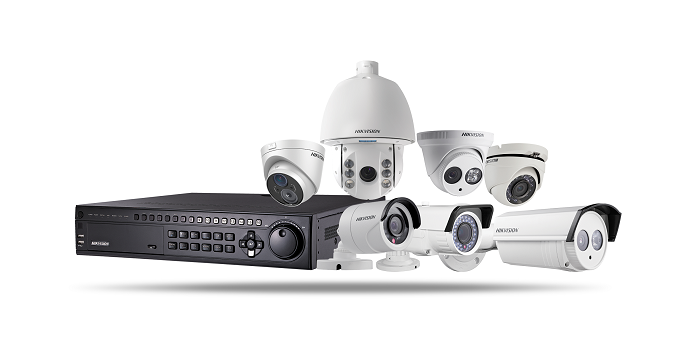Introduction
In our rapidly evolving digital age, the importance of security technology cannot be overstated. The future of IT security is a pivotal concern for industry leaders and individuals alike. As the sophistication of threats continues to escalate, staying abreast of the latest trends in new security technology is not just advisable; it's imperative. BCS Consultants is at the forefront of this evolution, guiding businesses and individuals through the complexities of modern security challenges. This blog delves into the cutting-edge trends shaping the security industry, offering a glimpse into the future of safeguarding our digital and physical worlds.
The Landscape of Security Technologies
Physical Security
Traditional Solutions Persist
Despite the digital revolution, traditional physical security solutions like CCTV and access control systems remain relevant. Their proven reliability in monitoring and managing access points underscores their continued importance in a comprehensive security strategy, highlighting the ongoing evolution of physical security technology.
AI-Powered Surveillance
Integrating Artificial Intelligence (AI) and analytics into surveillance systems marks a significant leap forward. This more intelligent approach to surveillance enhances monitoring efficiency and improves the accuracy of threat detection and response, positioning AI as a cornerstone of new security technology.
Emerging Trends: Drones and Perimeter Security
Innovations such as drone security and advanced perimeter protection technologies are setting new standards in physical security technology. These emerging trends offer unprecedented capabilities in surveilling hard-to-reach areas and fortifying the boundaries of protected spaces.
Cybersecurity
Escalating Threat Landscape
The digital domain is under siege, with cyberattacks and data breaches increasingly sophisticated. This alarming trend underscores the need for robust cybersecurity measures to protect sensitive information, spotlighting the urgency in addressing emerging technologies in cybersecurity.
Cloud and Zero-Trust Architectures
The shift towards cloud-based security solutions and zero-trust networks reflects the industry's response to evolving threats. These paradigms emphasize the necessity of defending the perimeter and securing every interaction within the network, showcasing the innovative approaches in new security technology.
AI and Machine Learning
The potential of AI and machine learning in transforming threat detection and prevention is immense, marking a pivotal advancement in emerging technologies in cybersecurity. These technologies are at the forefront of the cybersecurity revolution by automating the identification of anomalies and potential threats.
IoT Security
Addressing IoT Vulnerabilities
The expanding Internet of Things (IoT) ecosystem presents a new frontier of vulnerabilities. Ensuring the security of interconnected devices is paramount to safeguarding the increasingly digital fabric of our lives, highlighting the need for advanced solutions in the future of IT security.
Encryption and Secure Communication
The importance of device encryption and secure communication protocols cannot be overstated. These measures are critical in protecting the integrity and privacy of data transmitted across IoT devices, emphasizing the role of new security technology in IoT.
Securing Smart Environments
Solutions for securing smart homes, cities, and critical infrastructure are evolving rapidly. These initiatives are crucial in addressing the unique challenges presented by the widespread adoption of IoT technologies, illustrating the dynamic intersection of physical security technology and cybersecurity.

Top Industry Trends in 2024
Convergence and Integration
The movement towards integrated security platforms is not just a trend; it's a fundamental shift in the approach to comprehensive security management. These platforms are dismantling the barriers between physical and cybersecurity, creating a unified defense mechanism against a wide array of threats. Centralized management systems facilitate a bird's eye view of security posture, enabling seamless monitoring and management of diverse security components. Automated incident response mechanisms are set to redefine the speed and efficiency with which threats are identified and neutralized, significantly reducing the window of vulnerability. This trend toward integration signals a future where security operations are more synchronized, predictive, and resilient against complex threat vectors.
The Rise of AI and Automation
Artificial Intelligence (AI) and automation are at the forefront of the transformation in the security sector. These technologies are extending beyond mere threat detection, venturing into the realm of sophisticated risk assessment and management. The integration of AI enables security systems to respond to threats as they occur and predict and prevent potential security incidents before they manifest. This predictive capability, powered by advanced analytics and machine learning algorithms, represents a quantum leap in formulating and executing security postures. However, the deployment of AI in security brings ethical dilemmas and challenges, such as concerns over privacy, bias, and the potential for misuse. Navigating these issues will be crucial in realizing the full potential of AI and automation in cybersecurity.
Biometric Authentication and Identity Management
The adoption of biometric authentication methods is surging, propelled by their unmatched ease of use and security assurances. Fingerprints, facial recognition, and iris scans are becoming commonplace, providing a level of security that is difficult to replicate or forge. Despite these advantages, collecting, storing, and processing biometric data raises significant privacy and security concerns. Advanced identity management systems are emerging, designed to securely manage and protect sensitive biometric information while adhering to stringent regulatory requirements. These systems represent a critical advancement in securing identity and access management, ensuring that the deployment of biometric technologies enhances security without compromising individual privacy.
Cloud-Based Security Solutions
The ascendancy of cloud-based security solutions is reshaping the IT security landscape. The flexibility, scalability, and cost-effectiveness of cloud security infrastructures make them an increasingly attractive option for organizations of all sizes. These systems offer the agility needed to adapt to the rapidly changing threat environment, enabling dynamic scaling and the swift deployment of new security measures. However, the migration to cloud-based security also necessitates careful consideration of provider reliability, data sovereignty, and compliance issues. The emergence of cloud-native security architectures and distributed cloud models indicates the ongoing innovation in cloud security, ensuring that these solutions can meet the complex demands of modern IT environments. This trend underscores the critical role of the cloud in the future of IT security, providing a foundation for resilient, adaptable, and efficient security operations.

Conclusion
The security landscape is undergoing a profound transformation, driven by the integration of advanced technologies and the emergence of new threats. The trends discussed herein highlight the industry's dynamic nature and underscore the need for vigilance and adaptability in security strategies. BCS Consultants, California, remains committed to navigating this new frontier, providing expert guidance and innovative solutions in the face of ever-evolving security challenges. As we forge ahead, staying informed and proactive is our best defense against tomorrow's threats, ensuring a secure future in the digital and physical realms. Call us at +1 949-333-1000 for more information on the future of IT security.
FAQs
FAQ 1: How does integrating physical and cybersecurity benefit small and medium-sized enterprises (SMEs)?
Answer: Integrating physical and cybersecurity gives SMEs a holistic security posture that enhances protection against threats. This unified approach simplifies security management and improves response times to security incidents, ensuring that SMEs can protect their assets with the same rigor as larger corporations but with solutions scaled to their needs and resources.
FAQ 2: Can AI in security systems predict future threats, or does it simply react faster to known threats?
Answer: AI in security systems is advancing towards reacting to known threats at unprecedented speeds and predicting potential future threats through behavior analysis and anomaly detection. This predictive capability allows for proactive security measures, reducing the likelihood of successful attacks and enhancing the overall security landscape for organizations.
FAQ 3: What are the primary considerations for businesses when transitioning to cloud-based security solutions?
Answer: When transitioning to cloud-based security solutions, businesses should prioritize data privacy, regulatory compliance, and the security track record of the cloud service provider. Additionally, assessing the solution's scalability to accommodate future growth and the ability to integrate with existing security tools and protocols is crucial for a seamless and secure transition.


You must be logged in to post a comment.